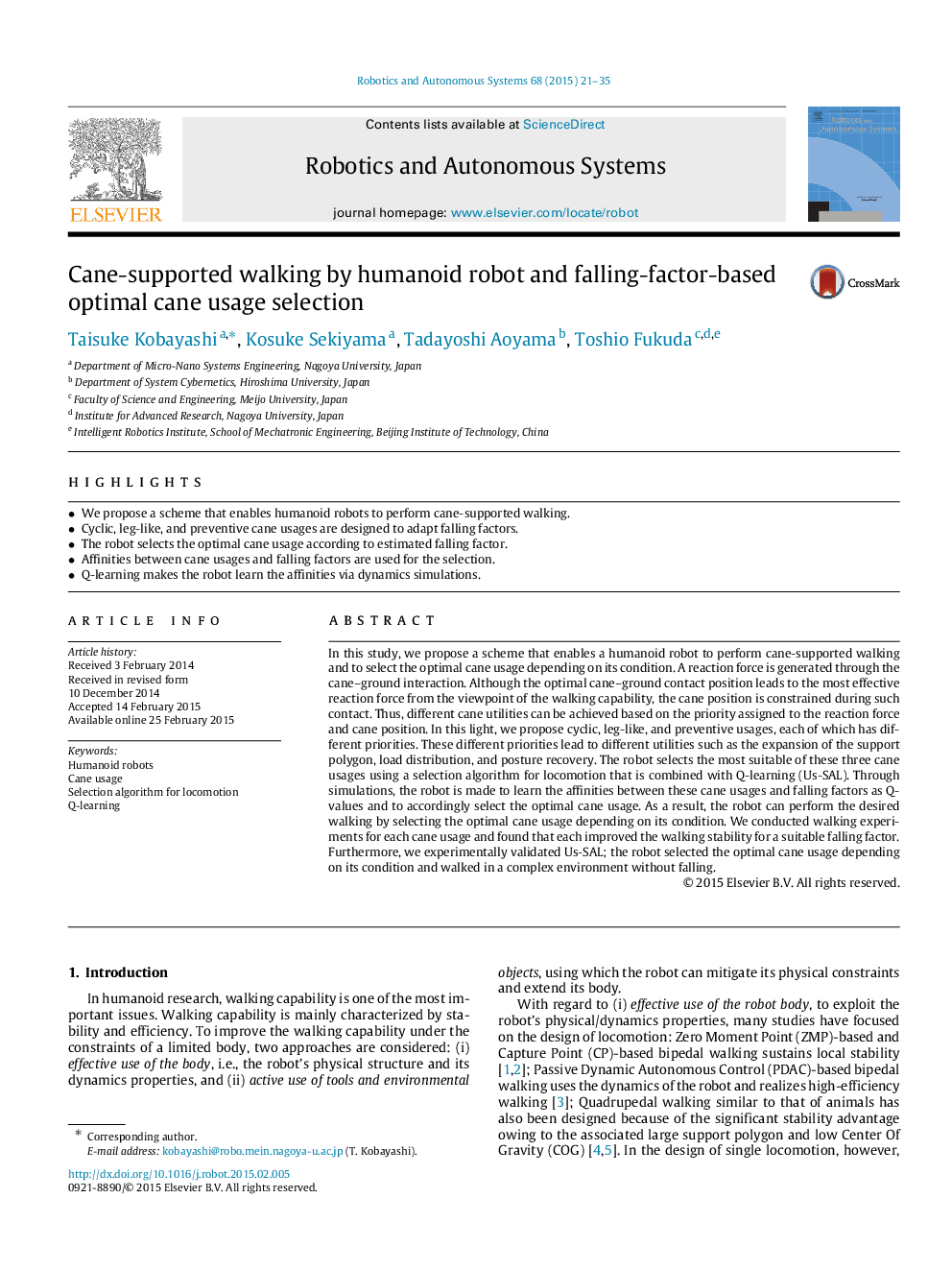| Article ID | Journal | Published Year | Pages | File Type |
|---|---|---|---|---|
| 412099 | Robotics and Autonomous Systems | 2015 | 15 Pages |
•We propose a scheme that enables humanoid robots to perform cane-supported walking.•Cyclic, leg-like, and preventive cane usages are designed to adapt falling factors.•The robot selects the optimal cane usage according to estimated falling factor.•Affinities between cane usages and falling factors are used for the selection.•Q-learning makes the robot learn the affinities via dynamics simulations.
In this study, we propose a scheme that enables a humanoid robot to perform cane-supported walking and to select the optimal cane usage depending on its condition. A reaction force is generated through the cane–ground interaction. Although the optimal cane–ground contact position leads to the most effective reaction force from the viewpoint of the walking capability, the cane position is constrained during such contact. Thus, different cane utilities can be achieved based on the priority assigned to the reaction force and cane position. In this light, we propose cyclic, leg-like, and preventive usages, each of which has different priorities. These different priorities lead to different utilities such as the expansion of the support polygon, load distribution, and posture recovery. The robot selects the most suitable of these three cane usages using a selection algorithm for locomotion that is combined with Q-learning (Us-SAL). Through simulations, the robot is made to learn the affinities between these cane usages and falling factors as Q-values and to accordingly select the optimal cane usage. As a result, the robot can perform the desired walking by selecting the optimal cane usage depending on its condition. We conducted walking experiments for each cane usage and found that each improved the walking stability for a suitable falling factor. Furthermore, we experimentally validated Us-SAL; the robot selected the optimal cane usage depending on its condition and walked in a complex environment without falling.
